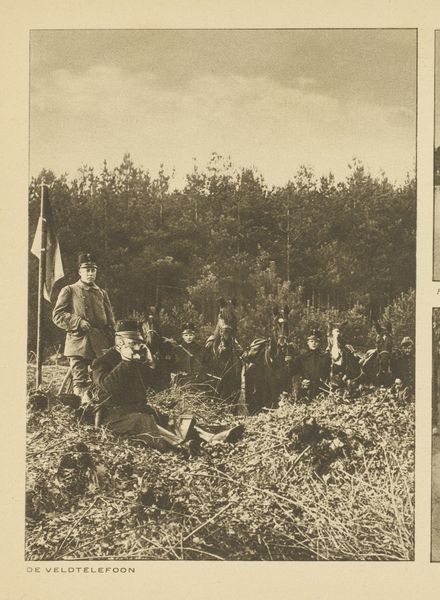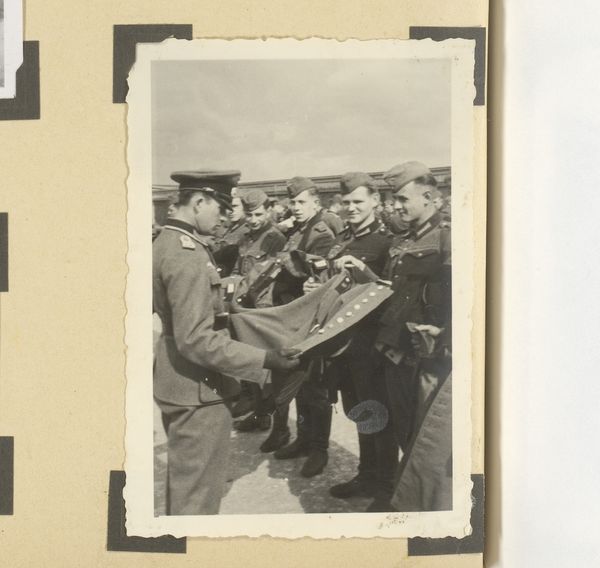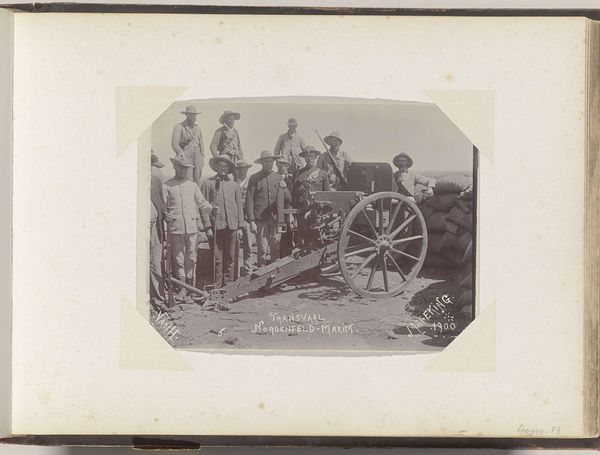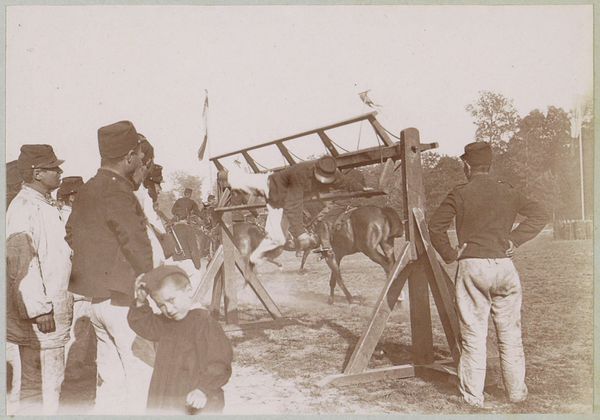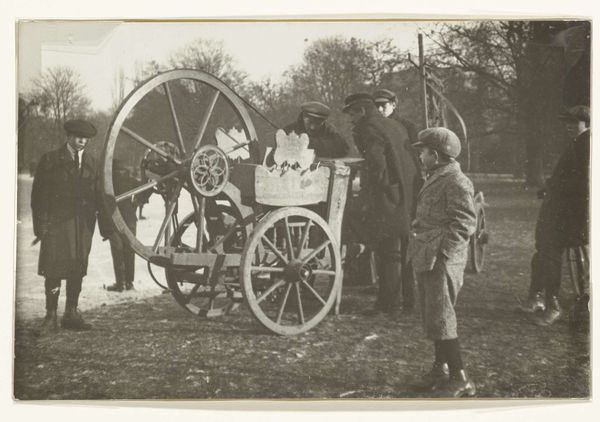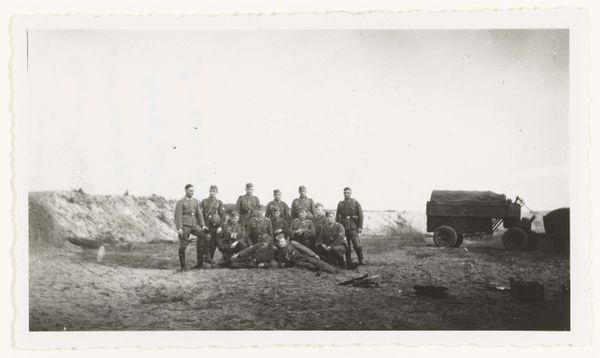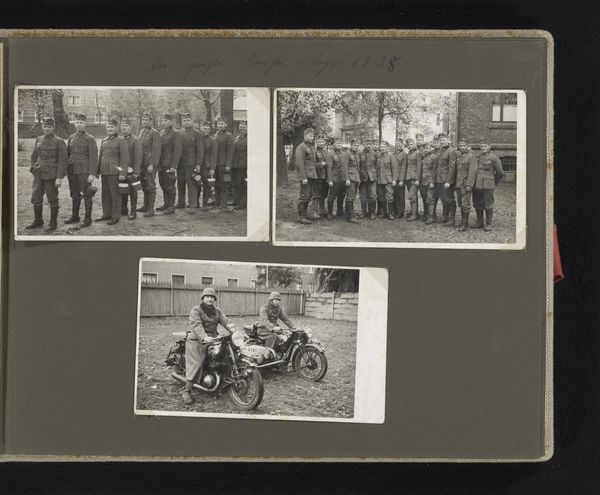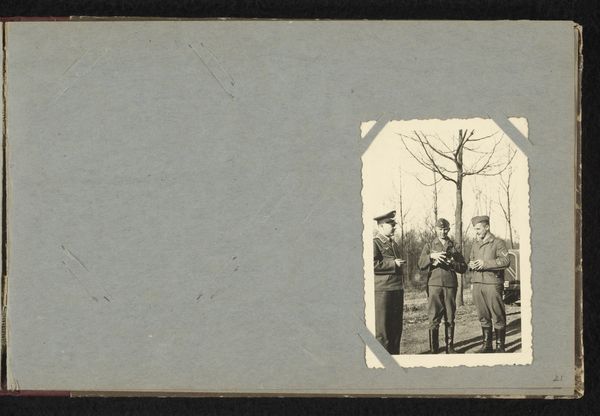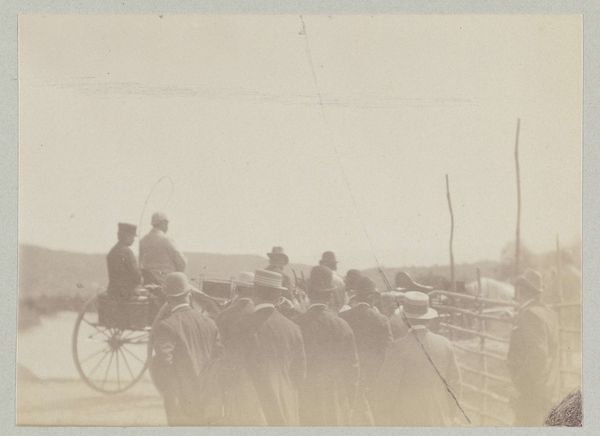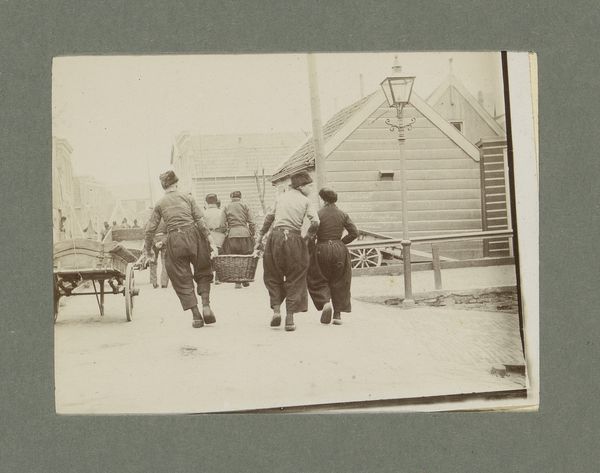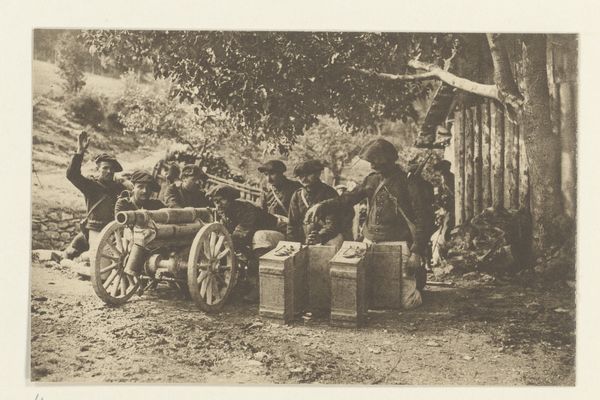
photography, gelatin-silver-print
#
portrait
#
landscape
#
archive photography
#
photography
#
group-portraits
#
gelatin-silver-print
#
history-painting
#
modernism
Dimensions: height 53 mm, width 57 mm
Copyright: Rijks Museum: Open Domain
Curator: Before us, we have an anonymous gelatin-silver print entitled "Vijf militairen voor de bunker," or "Five Soldiers Before the Bunker," created sometime between 1940 and 1944. Editor: My first impression is one of chilling indifference. The soldiers, seemingly at rest, framed against a bleak landscape. The array of weaponry creates an unnerving juxtaposition to their relaxed poses. Curator: The composition is interesting; observe the contrast between the soft tonal gradations of the sky and the sharper delineation of forms in the foreground—the soldiers, their equipment, and the angular structure behind them. There’s a deliberate orchestration of light and shadow at play. Editor: Precisely, but consider the physical realities of its production. Gelatin-silver printing—a relatively accessible process during the mid-20th century—allowing for mass dissemination of propaganda imagery. The photograph served as a tool. How was the image circulated, and who were its intended consumers? The paper's texture is relevant; it indicates a mass-produced product meant to portray this military power. Curator: Indeed, the image does convey a particular visual language, an attempt to normalize and, perhaps, aestheticize military presence within the landscape. It uses conventions of portraiture and landscape to create an ordered tableau. Look at the careful placement of each figure and how the bunker acts almost as a framing device behind them. Editor: Right, yet consider also the unseen labor required: from the photographers themselves operating under potentially dangerous circumstances, to the factory workers churning out this gelatin-silver paper by the ream. Even their weapons represent a network of extraction and manufacturing of metal and plastic that feed the machinery of conflict. The very materiality speaks to wider production. Curator: Well observed. Though its visual rhetoric may aim to normalize or even ennoble, considering these additional production dynamics undeniably enriches our understanding. Editor: The stark contrasts between the technology of war and everyday rest makes me uneasy. We see the complex interplay of labor, intention, and ultimately, how an artifact carries echoes of war through time. Curator: I appreciate the photograph even more now, understanding how these formal choices subtly guide the eye and shape our perception of this historical moment, not just the image's visual elements. Thank you for your time.
Comments
No comments
Be the first to comment and join the conversation on the ultimate creative platform.

